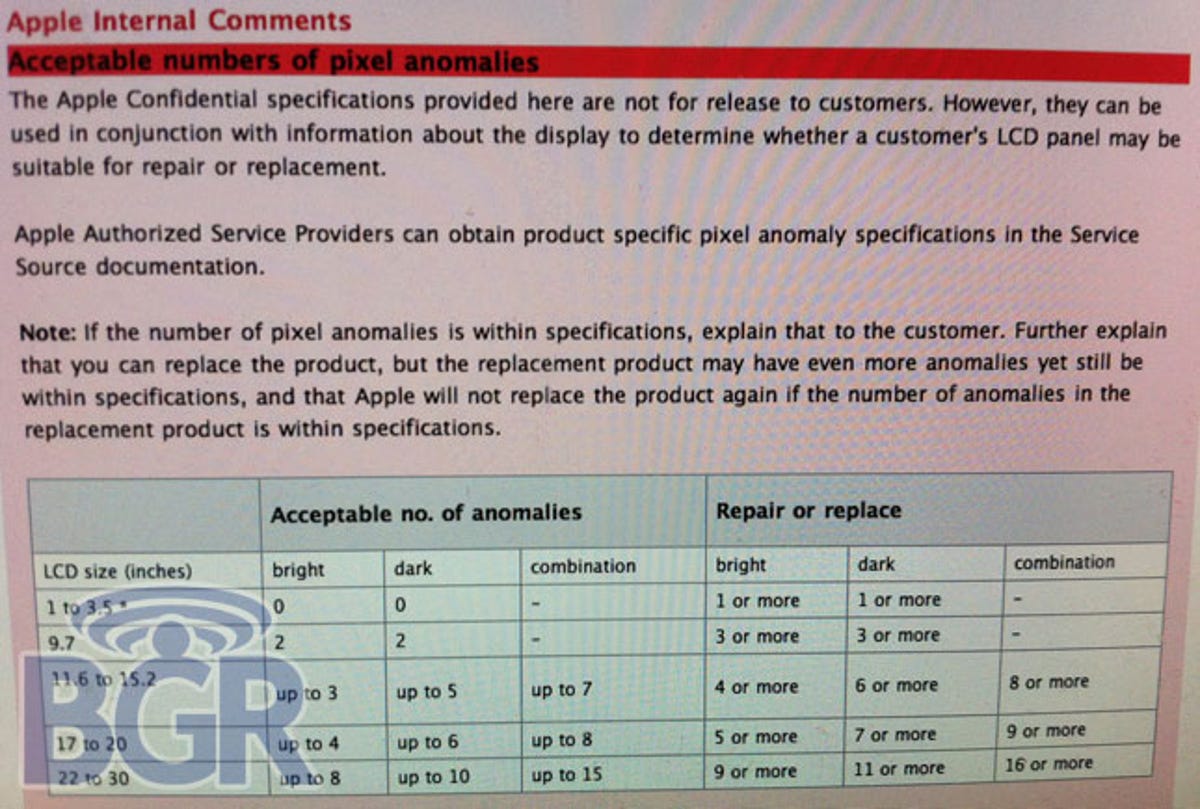Boy Genius Report has uncovered documents containing Apple’s policies regarding dead pixels, including replacement requirements for iPhones, iPads, and various-size Macs.
The document suggests that Apple employees have leeway when dealing with customers that have dead pixels on their screen, but should abide by the grid (see below) when determining if a unit should be replaced.
iPhones, for example, should have no dead pixels, whereas an iPad can have as many as two before it would be replaced. Screens on bigger Macs could have as many as 16 dead pixels before an Apple employee might replace it.


Boy Genius Report
Of course, this is just a suggested set of numbers for service providers to follow and in my experience working at an Apple Store, we would generally replace screens that had the lowest number of pixels allowable for repair. We would also give consideration to screens that had an abnormally high concentration of dead pixels in one particular area (assuming there was no incidental damage).
LCD screens (even the replacement ones) could certainly contain anomalies right out of the box, so it is important to remember that Apple is not required to replace them. As the note on the document suggests, Apple will most likely not replace a replacement should it contain dead pixels as well (assuming it does not fall into the specification).
If you’ve got dead pixels, and you’re still under AppleCare, you can take your machine or device in to an authorized Apple Service provider or an Apple Store and get your screen checked out (and perhaps replaced for free).
Have you had to get your screen replaced because of dead pixels? What was your experience like? Let me know in the comments!



